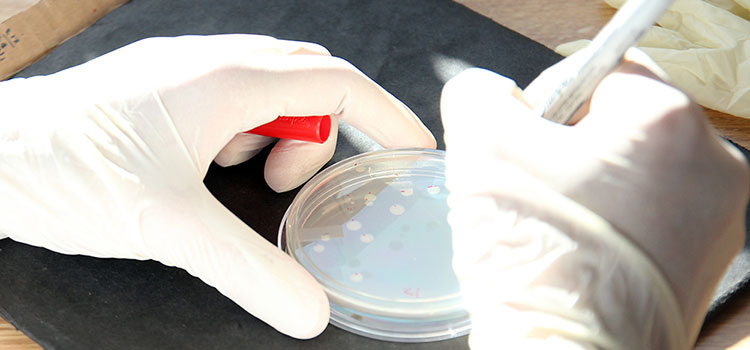Phosphorus (P) is an essential macro element, required for the success of all known life forms, including cannabis plants. P is especially important for early stage root development, stem strength, resistance to disease, nutrient uptake, flower formation and yield. All aspects of cannabis growth and development are explicitly dependent on P availability.
Phosphorus acts as a catalyst to support important biochemical reactions required for new cannabis growth, such as: photosynthesis, cannabis metabolism and nutrient uptake. For example, the most important chemical reaction in nature, photosynthesis, utilizes light energy to generate chemical structures called adenosine diphosphate (ADP) and adenosine triphosphate (ATP). These high-energy phosphate containing molecules drive all the necessary biochemical reactions (using a process called phosphorylation) to support internal energy transfers – facilitating cellular division (i.e. cannabis growth) throughout the entire life cycle of the cannabis plant from seedling to bloom.
Nutrient uptake is another critical function that is facilitated by ATP (energy), because this process requires the active transport of nutrients to oppose osmotic forces within and outside the plant cell membrane. ATP is also the energy source that allows for the synthesis of many key cellular components, including phosphoproteins, phospholipids, and sugar phosphates.
Phosphorus is vital in order to maintain the cannabis plant’s genetic integrity from one generation to the next. For example, P is a primary component of deoxyribonucleic acid (DNA), which is a molecule that stores the genetic instructions used for cannabis development and reproduction. Phosphorus is also a component of ribonucleic acid (RNA), the compound that reads DNA (i.e. the genetic code) to build structural, functional and reproductive compounds used across the cannabis plant life cycle – from early stage cellular development to later stage bloom production. Both DNA and RNA are linked together by phosphorus bonds. Healthy cannabis development is explicitly linked to its genetic make-up – which is unconditionally dependent on P availability.
Phosphorus deficiency can impair the plant’s ability to take up other essential nutrients, and can significantly reduce cannabis health, immunity to disease, crop quality and harvestable yield. Cannabis plants that are deficient in P often exhibit stunted growth and may display symptoms such as leaf discoloration. This happens because, when P is deficient, sugars accumulate and cause anthocyanin pigments to develop, sometimes producing a reddish-purple color.
Real world phosphorus challenges in production
Phosphorus is one of the most globally limiting nutrients for crop productivity. The largest natural deposits of rock phosphate mined for commercial agriculture are limited to a few countries, including: China, Russia, Morocco, and USA. This is a challenge, because inorganic P fertilizer is used in most commercial – agriculture fertilizer programs across the world. Due to increasing agriculture demand for P- along with the finite global supply of rock phosphate- finding sustainable technologies to deliver P to plants is a major challenge that scientists across the world are actively focused on solving.
Although P is widely distributed in natural systems, it mostly exists in mineral forms or as organic matter that cannot be directly taken up by plants. Rock phosphate is used as the primary source of inorganic P fertilizer for traditional commercial agriculture; and manure is the primary source of P used in organic agriculture management practices. However, these forms of P need to be broken down into dissolved orthophosphate (P043-) to be utilized by the plant. A challenge that limits cannabis P uptake is the inherent chemical binding characteristics of most growth media such as soil, peat, and coco. For example, up to 70% of P applied to these types of growth media can become almost immediately unavailable for plant uptake due to natural chemical binding and chemical transformations. In practice, most growers apply excessive P fertilizer to soils and growth media in order to deliver ample P for plant growth. Optimizing cannabis plant nutrient use efficiency (defined as yield per unit P input) is a challenge that most indoor and outdoor cannabis producers commonly face.
Many studies have cited that harnessing the natural power of soil microbes can help maximize nutrient use efficiency and plant P uptake. Soil microbes can be utilized to naturally unlock bound nutrients, transforming nutrients back into plant available forms, maximizing P availability to significantly increase plant P uptake and in turn maximize the phenotypic potential of the cannabis plant for optimal growth, quality and yield.
While most growth media contain some microbes capable of cycling P, there are now commercially available organic microbial formulations with superior P-mobilization functionality. The future success of cannabis productivity depends on these new biological solutions to sustainably deliver P to cannabis plants. The adoption of microbial biostimulants (i.e. beneficial bacteria) in cannabis production can greatly increase plant P uptake, leading to increased cannabis health, quality and yield. The development and adoption of innovative biological technologies in cannabis management practices such as superior P-mobilizing beneficial bacteria will likely drive improvements in cannabis quality and productivity over the next 100 years. Functionally targeted microbial inoculants also represent the next-generation of green revolution technologies which will support agriculture management across many crops to help farmers increase production to meet global food demands.
Editor’s Note: This article was written by Colin Bell, PhD. — co-founder of Growcentia, co-inventor of Mammoth Microbes and a former research scientist at Colorado State University. If you’d like to hear more from Colin, check out the recent Ganjapreneur podcast episode in which he discusses taking the leap from academia to entrepreneurship and how to foster teamwork in a start-up environment.
